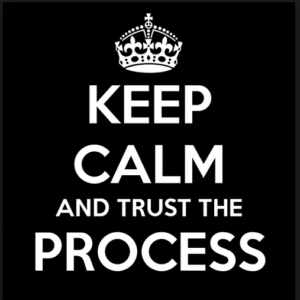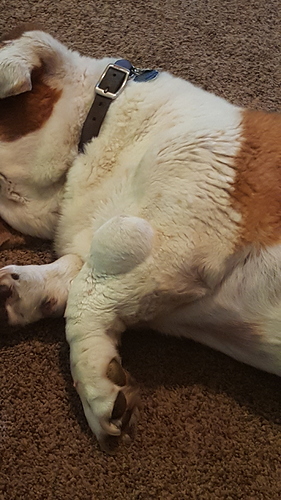Yes, indeed! Lots going on behind the curtain - and there are plenty of good hearted vets navigating the high tech veterinary business model which I know is very very expensive. I appreciate you taking the time for considered writing and exploration of this topic close to our hearts 
Due to hearty ketosis, my usual writing skills which are already extensive get super-eloquent so my posts on this are long too - and no worries about reading it all or responding… just am hoping it’s of benefit! 
My conundrum is that I’m a massive fan of the old-fashioned healing & care of rural life - I grew up reading and re-reading James Herriott’s novels - and I had grand and great-grand parents who were farmers and hunters, etc. I always feel somewhat lost in the high tech institutional settings, and though I am an astute advocate for others, when I’m the one that’s vulnerable due to an emergency for myself or an animal - it’s another beast altogether.
The thing about the costs is that those who are devastated about an animal injury or disease and who are economically marginalized (at least 40% of the adult population in the U.S.) and/or overwhelmed may not have the energy or assertion to self-advocate in the institutional setting - due to psychosocial realities and cultural differences. We see this psychology and institutional hierarchy a lot in otherwise healthy women who navigate industrial medicine institutions for physiological birth - experiences which often ends up with quite a lot of interventions and disempowerment without continuous care provider emotional labor support from certain trusted friends or midwives and doulas, etc. And again, such independent support & advocacy is often not accessible or doable for both parties, despite a few non-profits that try to help.
Yes, similar to human healthcare in the U.S., clinical bills/estimates for both human and animal clinical care are frightening to look at for those who are already stressed about money and then having to sign forms whilst in a deeply vulnerable state - and when the person articulating the bill is a much more privileged person, there are some additional weird dynamics. I’ve experienced NHS healthcare in Britain at a clinic as well as a hospital, and was treated with a humanity as if I were royalty myself - and zero fees/bills - this has lent me a particularly acute sense of the U.S. situation, what a difference!
Back to animals, when looking at costly estimates or putting down animals, the poor/indigent who are otherwise empathic may well feel doubly poor/oppressed in being forced to deprioritize animal expenses due to inability to pay. It’s different with people who are simply not that empathic about their animals though.
I agree, the U.S. fails at both human and animal access to quality emergency care as well as preventative care (defined by me quite differently than the superficial cr** that the health insurance industry considers prevention). I’ve had a hunch that a good many veterinarians in today’s world are often having to cope with the turning away or the euthanasia due to poverty situation - it’s its own stress for otherwise vocationally called and animal-loving people. There was a highly educated and bright young female veterinarian a year or two back in south Korea (I think that was the location) whose depression over the constant daily putting down of animals in the urban practice she worked in who were strays or whose care wasn’t funded - and the conflict she had about it in regard to her vocational vision, was implicated in her inner downward spiral that led to her tragically taking her own life. 
I have no doubt that for those who are more oriented towards kinship with all life, and healing - that it must be very very hard, the knowing of how intelligent and conscious animals are. I’ve long loved the book by J. Allen Boone called “Kinship With All Life” written in 1954 (new editions too - you probably already know of it) - that tells stories of kinship from the perspective of a successful Hollywood writer’s own life experiences, and his meaningful relationships with diverse creatures, from a house fly to a German Shepherd pro acting dog called Strongheart.
Opposed to such kinship is human supremacism - embedded in industrial culture & domination civilization - but it’s not the only way. Humanity lived for millions of years as aboriginal & indigenous hunter-gatherer peoples in harmony with the land and its creatures - it’s only very recently in history that civilizations have destroyed 98% of old growth forests, eradicated 90% of the big fish in the sea, and now our oceans can barely breathe etc. Another well documented report on this is circulating today, from Science Alert, with the headline "Humans are only .01% of Life on Earth, but has still Annihilated the Rest of it.". And, cultures that live outside industrial culture in traditional and or uncontacted way have had 99% of their lands stolen, and their cultures have suffered unspeakable genocide.
Anyway… Yes, scheduling a sit down w/ a hospital director about the strays and ferals sounds good - I’d thought of it before but assumed it wouldn’t fly, as when I’ve stated the origins of strays/rescues in times past and been humbly & thoughtfully transparent about not having credit lines and chagrined as to how to proceed front desk staff have certainly not indicated that could be a reasonable option. I know they are very overwhelmed themselves. Speaking of which, my local county animal shelter (which has been no-kill now for a year) associated non-profit arm that makes appear as if they are dedicated to TNR, has no dedicated paid leadership staff (only volunteers) and simply sends jumbled long emails with info which marginalized folks can scarcely grok, and dictates that people who want to borrow traps should come to specific locations within a very narrow time frame within biz hours - as if average working poor or long term poor folks can do that well. No other support. It surprised me when I learned of it, as I’d assumed the County at this point had a infrastructure for serving urban animals better. Such as weekly drivers that drop off traps, scheduled teams of volunteers that assist with trapping when a household is unable to for whatever reason, etc. We’re not there yet, alas!!!
However the wildlife rescue non-profits in my area are abundantly funded (by private donors) and excellently staffed by wonderful people. I took an injured male red finch in and he was treated like a King, thankfully - it turned out he was just in shock despite the trickle of beak blood, and he soon got released back to his neighborhood.  We also have an independent nonprofit founded by a compassionate semirural family farm on the outskirts of the city, focused exclusively on taking injured pigeons (already much maligned for just being… pigeons) so they can receive care and live out their one-winged or one-legged days in big aviaries. Someday soon when my schedule/resources allow I def want to serve as a volunteer for such places - imho they are patches of heaven on earth.
We also have an independent nonprofit founded by a compassionate semirural family farm on the outskirts of the city, focused exclusively on taking injured pigeons (already much maligned for just being… pigeons) so they can receive care and live out their one-winged or one-legged days in big aviaries. Someday soon when my schedule/resources allow I def want to serve as a volunteer for such places - imho they are patches of heaven on earth.



